Song: Aerial Imagery Land Management
1. High-Resolution Land Classification
AI-driven analysis of high-resolution aerial imagery can classify land cover into fine categories (e.g. crop types, vegetation, built areas) with much greater detail than coarser methods. Machine learning models can capture subtle spatial patterns, enabling very granular land use/land cover maps. This higher detail supports better decision-making for resource management, infrastructure planning, and environmental monitoring. Recent methods using convolutional networks or hybrid models have significantly increased classification accuracy. For example, deep networks can now distinguish complex mosaics of crops, forests, water, and urban features at sub-meter scales. Overall, high-resolution classification has become more reliable and is providing richer data layers for planners.
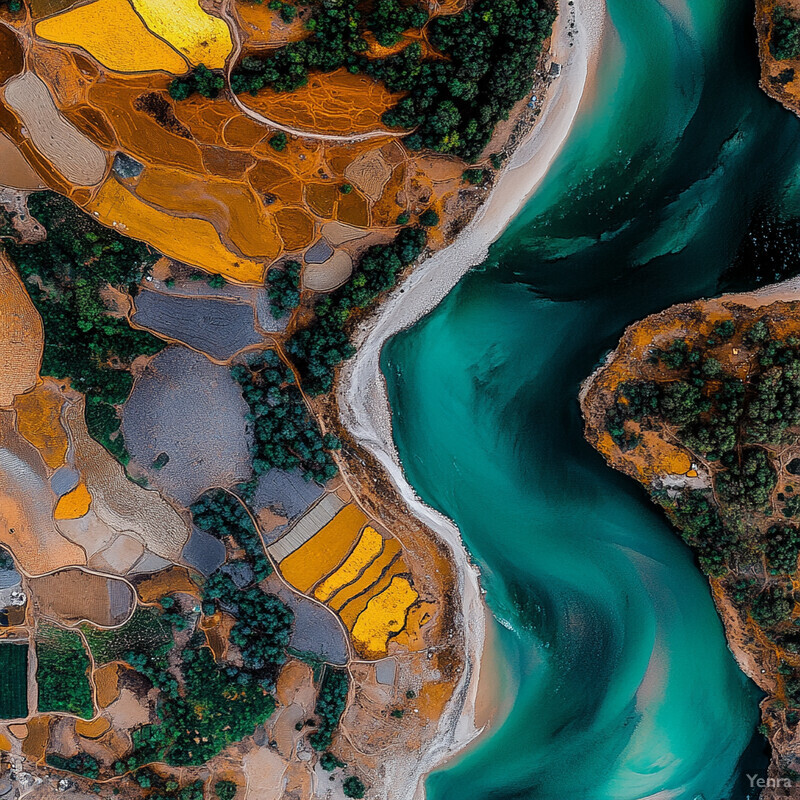
In a 2025 study, a deep neural network trained on 20 cm aerial imagery achieved 0.89 overall accuracy (and Intersection-over-Union 0.78) in land cover classification, with data augmentation boosting model performance by ~30%. Another study found that a hybrid ANN–Random Forest model outperformed a standard neural net on Sentinel-2 imagery, yielding higher classification accuracy for land cover classes. A separate effort produced centimeter-resolution maps for 27 diverse landscapes (nine land-cover classes) using UAV imagery and convolutional networks. These results demonstrate that AI can leverage very high-resolution imagery to produce detailed and accurate land-cover maps, improving on traditional classification methods.
2. Automated Change Detection
AI-enabled change detection rapidly compares new and historical aerial images to highlight land surface changes. Machine learning methods (e.g. convolutional change detection networks) identify new deforestation, construction, or vegetation loss far faster than manual review. Automated approaches can flag subtle changes (e.g. small clearings or water incursions) across large areas, enabling near-real-time monitoring. This supports prompt interventions – for example, detecting illegal logging or post-disaster damage quickly. By automating the time-consuming overlaying of multi-date imagery, AI increases the speed and scale of environmental monitoring, freeing analysts to focus on verification and response.
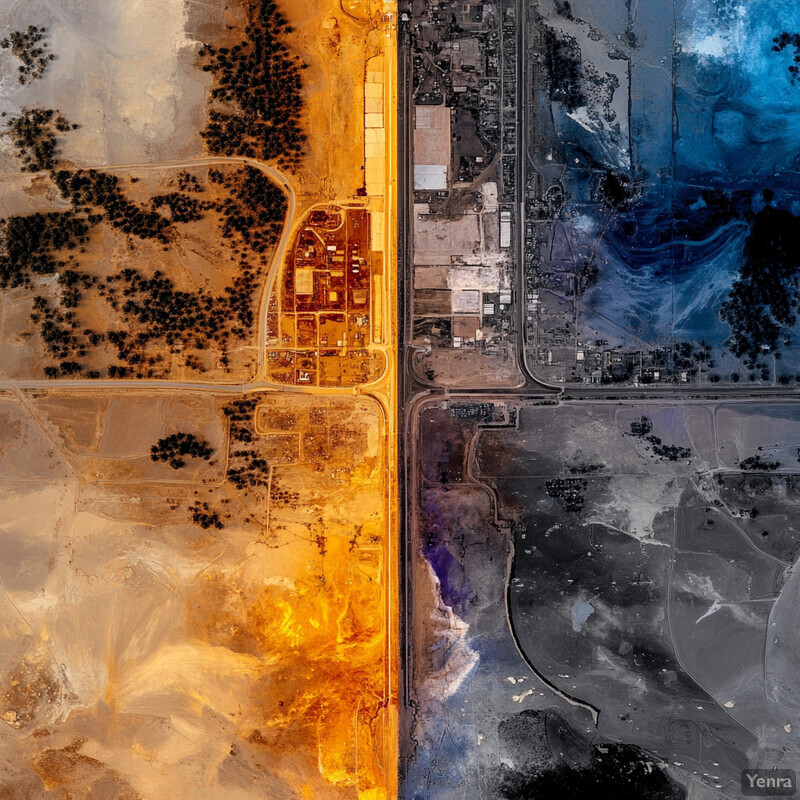
For instance, a new tool (EAMENA MLACD) used sequential satellite images and machine learning to create land-cover maps and automatically detect disturbances near archaeological sites; initial case testing showed it identified threats and disturbances much faster than manual methods. More broadly, a recent survey notes that deep learning makes it possible to perform “automatic, accurate, robust change detection on large volumes of remote sensing images”. In practice, USGS applied AI to create an Annual Land Cover Database from Landsat data; processing over 295 trillion pixels (1985–2023) enabled automated year-to-year change detection at national scale, drastically reducing the need for manual editing. These examples illustrate that AI can reliably flag land-use changes (e.g. new development or natural disturbances) by comparing temporal imagery.
3. Precision Agriculture
In precision agriculture, AI analyzes aerial (drone or satellite) imagery to optimize farming inputs and monitor crops. Models detect variability in plant health and soil conditions, enabling variable-rate application of water, fertilizers, or pesticides only where needed. This targeted approach increases yields and reduces waste. AI can also forecast yield, identify nutrient deficiencies or diseases early, and help plan harvest timing. By producing detailed field maps of crop vigor, moisture, and nutrient stress, AI supports timely interventions that enhance productivity and sustainability.
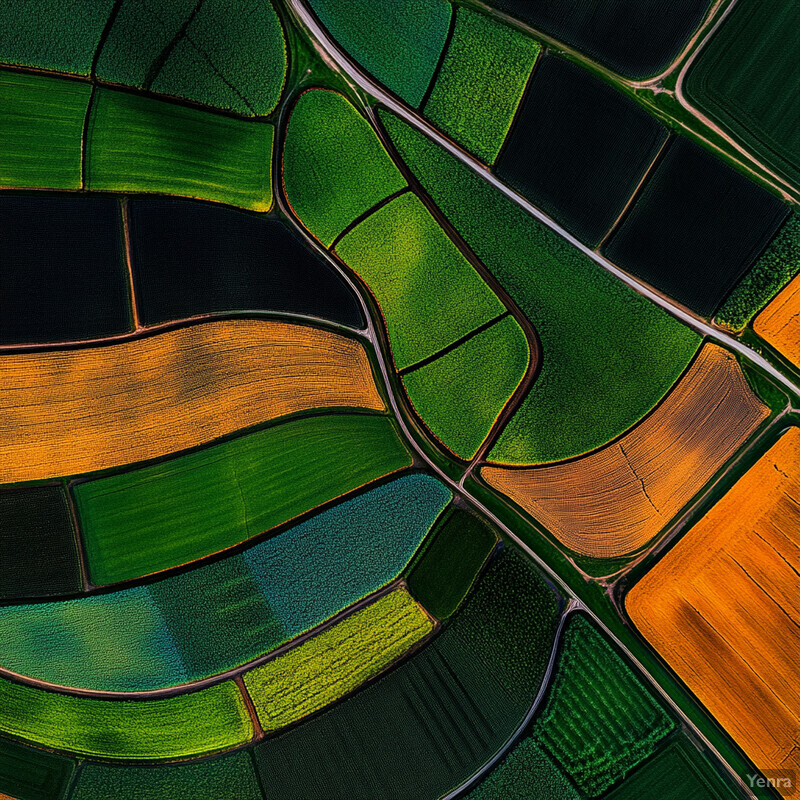
For example, a review highlights that drones with multispectral cameras can generate high-resolution crop and soil moisture maps; farmers use these to apply inputs variably, optimizing resource use (less water/chemicals) across the field. Such “precision mapping” has been shown to improve decision-making and yield forecasts; growers can track crop development and predict yields more accurately than before. In one study, a YOLOv8 deep-learning model was trained on soybean images to detect nutrient deficiencies; it achieved 98.5% mean average precision in validation and processed each image in only 3.46 ms. This demonstrates that AI can rapidly identify crop stress symptoms from aerial imagery with very high accuracy, guiding fertilization or irrigation to the precise plants that need it.
4. Vegetation Health Monitoring
AI uses aerial imagery to assess vegetation health continuously. By computing indices like NDVI (Normalized Difference Vegetation Index) from multispectral images, AI models quantify plant vigor and stress levels across large areas. This enables detection of drought stress, nutrient shortages, or disease outbreaks before visible symptoms appear. High-frequency monitoring can reveal gradual declines in health (e.g. due to drought) or improvements after interventions. Consequently, farmers and land managers can adjust irrigation, fertilization, or pest control in response to emerging problems. These health maps also help in ecological monitoring – for example, tracking forest health over time or identifying habitats under stress.
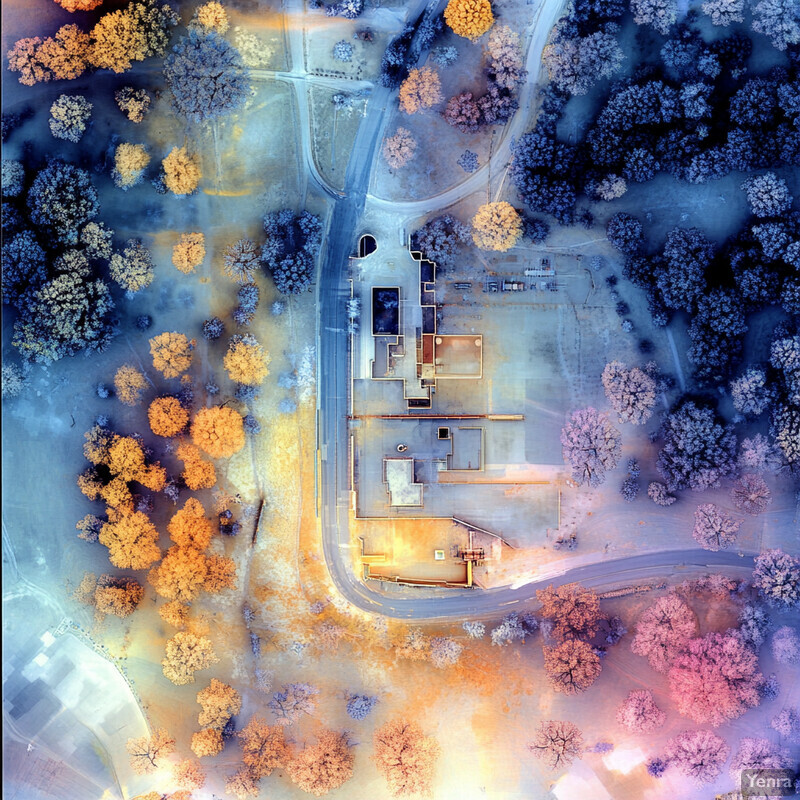
Drones equipped with multispectral sensors can capture plant physiological changes that are invisible to the naked eye; by calculating NDVI across a field, they highlight areas of weaker vegetation. In practice, these indices are strongly correlated with crop conditions: one study reported that a deep learning model predicting soybean yield from mid-season NDVI data achieved R² ≈ 0.70 (explaining over 70% of yield variance). This indicates that such indices (and the AI models that use them) can reliably identify spatial patterns of plant health. Continuous AI-driven monitoring of these indices helps managers understand seasonal health patterns and respond to stress on specific field regions.
5. Soil Moisture and Irrigation Planning
AI analyzes aerial (and satellite) data to estimate soil moisture, guiding irrigation decisions. For example, radar (e.g. Sentinel-1) and multispectral images can be processed by deep networks to map surface soil moisture content. These moisture maps allow farmers to apply water only where and when needed, improving water efficiency. AI can also forecast future irrigation needs by learning from historical weather and remote-sensing data. By predicting when and where fields will dry out, such systems optimize irrigation schedules. Overall, these tools help conserve water, maintain crop yields, and support drought mitigation strategies.
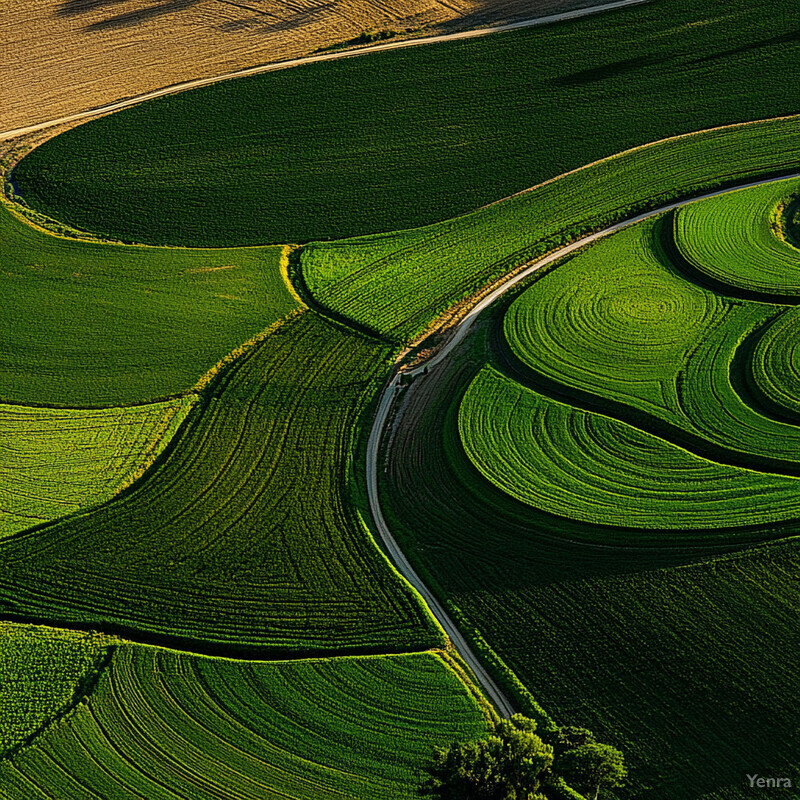
One study combined Sentinel-1 radar and Sentinel-2 optical imagery with terrain data in a deep neural network to predict soil moisture in a bare field. The model achieved a Pearson correlation of 0.80 with ground truth and RMSE of 0.04 (volumetric). Another example used MODIS satellite data and climate inputs in a novel AI model for irrigation planning; this model yielded R² ≈ 0.93 in forecasting regional agricultural water demand. These results show that AI-driven models can estimate soil moisture (and water needs) with high accuracy using remote observations, enabling more precise irrigation planning.
6. Wildfire Risk Assessment and Management
AI helps assess and manage wildfire risk by analyzing vegetation dryness, fuel loads, and weather conditions from aerial data. By tracking indices like NDVI over time and combining them with meteorological data, AI models can identify areas at high fire risk (e.g. very dry vegetation). AI is also used to detect active fires from thermal imagery. These capabilities support early warning systems and allocate firefighting resources more effectively. In management, AI can map burn severity from post-fire imagery, guiding restoration efforts. Overall, AI-driven monitoring of vegetation and atmospheric conditions helps predict and respond to wildfire threats.
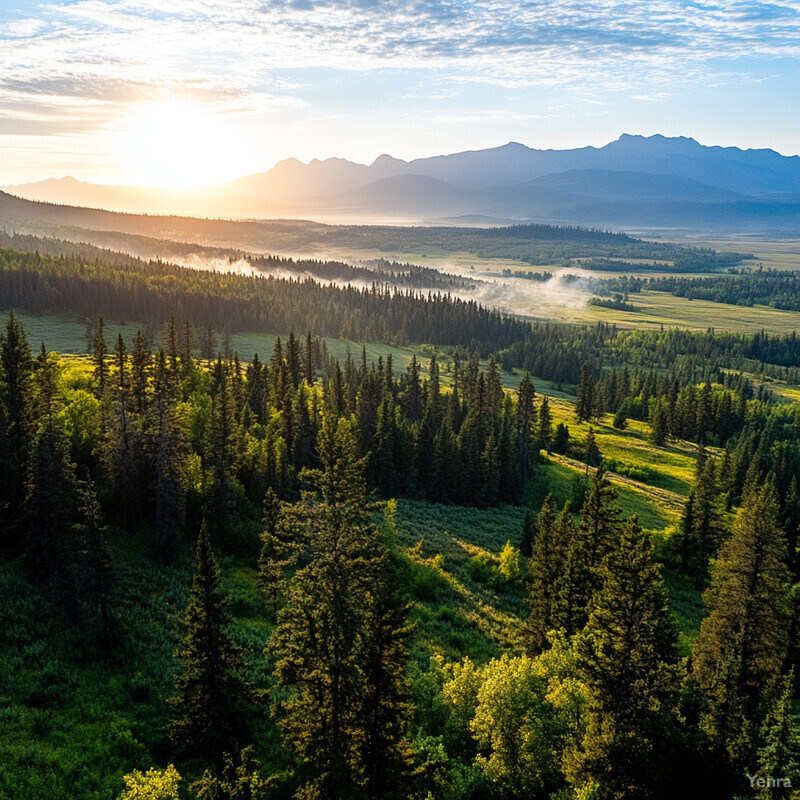
For example, a 2025 study developed a machine learning model that integrated global satellite imagery, weather, and vegetation data to predict lightning-induced wildfires; it achieved over 90% accuracy in distinguishing days/locations where such fires would occur. This illustrates the power of AI to forecast fire outbreaks using multi-source data. (While specific accuracy statistics for vegetation dryness indices were not available, NASA’s operational systems also use remote sensing and AI for near-real-time fire detection.) These advances suggest that AI can reliably identify high-risk conditions for wildfire ignition and spread.
7. Coastal Erosion and Flooding Analysis
AI-enabled analysis of aerial and satellite imagery is used to monitor coastlines and flood-prone areas. Models can delineate the shoreline and detect changes (e.g. erosion, accretion) over time. For flooding, AI interprets inundation patterns from imagery (multispectral or SAR) to map water extents and model flood depths. These data support coastal management (e.g. dune restoration, sea wall planning) and disaster planning (e.g. mapping storm surge risk). The high-resolution mapping of coastline changes and floodwaters helps policymakers and engineers design mitigation strategies and update hazard maps.
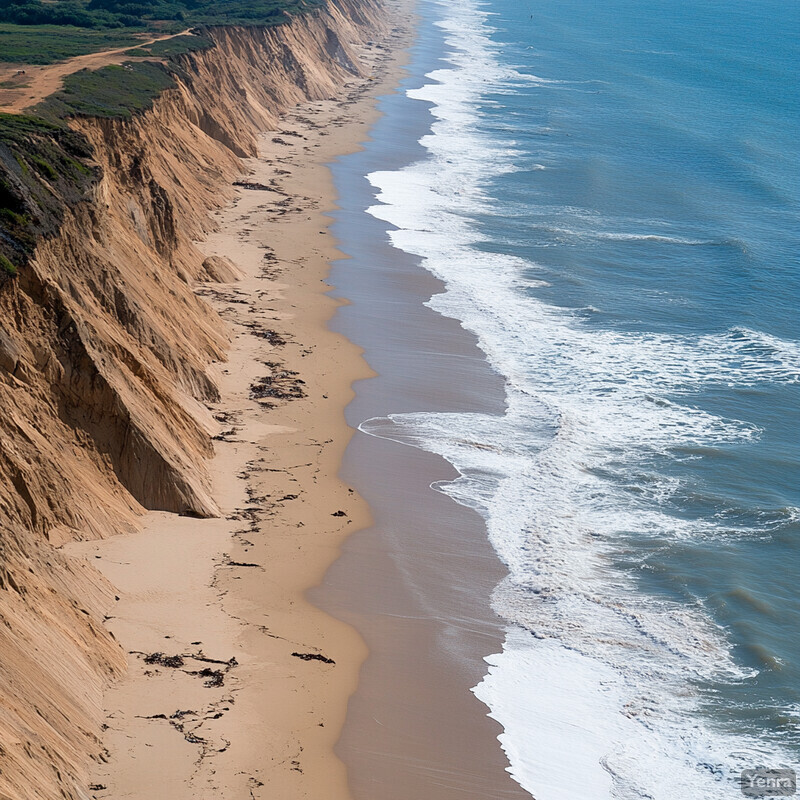
Researchers recently applied the Segment-Anything Model (SAM) to complex coastal imagery for precise water–land segmentation. By combining SAM with dynamic mode decomposition and DEM data, they accurately extracted shoreline boundaries even in vegetated or tidal zones. A review also notes that integrating satellite, drone, and video data with machine learning enables automated, high-resolution monitoring of shorelines and flood dynamics, capturing events (e.g. storm erosion) missed by intermittent surveys. These results show that AI can reliably detect and delineate coastal features and changes (such as erosion fronts or inundated areas) from time-series imagery.
8. Invasive Species Detection
AI-driven image analysis can locate and map invasive plants or animals from aerial imagery. Convolutional neural networks (e.g. YOLO models) can be trained to recognize the visual signatures (shape, color) of invasive plants against a background. UAV surveys can then map infestations over large areas, enabling targeted removal efforts. This approach can detect isolated outbreaks early, preventing spread. AI can also process hyperspectral drone data to discriminate invasive vegetation by its distinct spectral fingerprint. Overall, these tools offer a scalable way to monitor ecosystems for invasive species.
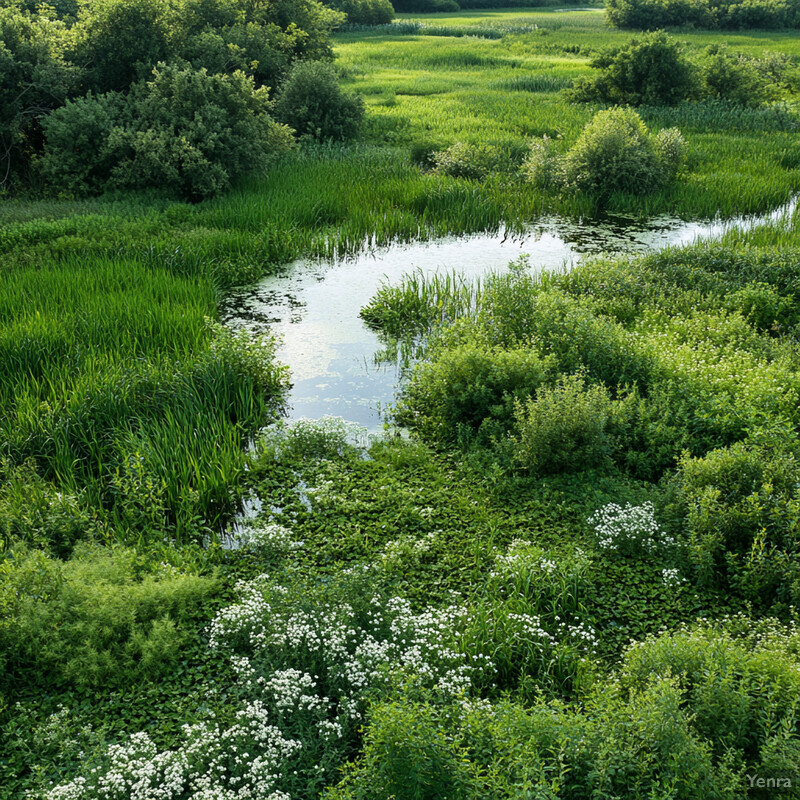
As an example, a study used UAV imagery and a YOLOv8 network to detect invasive mesquite (Prosopis juliflora) in arid rangelands. The model achieved ~87.5% precision and 80.8% recall, and spatially mapped mesquite with over 90% accuracyoajaiml.com . Similarly, remote sensing analyses often rely on spectral differences: multispectral and hyperspectral data have been shown to capture distinctive signatures of invasive plants like mesquite or cogongrass, enabling their discrimination in imagery. These results demonstrate that AI can accurately identify invasive plant species from aerial data, significantly outperforming manual surveys in area coverage and speed.
9. Urban Planning and Infrastructure Monitoring
AI analysis of aerial imagery is used in urban planning to classify land use (residential, industrial, green space), detect new construction, and monitor infrastructure. Machine learning can automatically map roads, buildings, and green cover. Planners use this information to track urban sprawl, identify areas lacking services, or assess vegetation cover in cities (important for heat island mitigation). AI also detects changes in infrastructure (e.g. illegal builds or collapsed roads after disasters). By quickly updating urban maps with high-resolution data, these tools support smarter city design and maintenance.
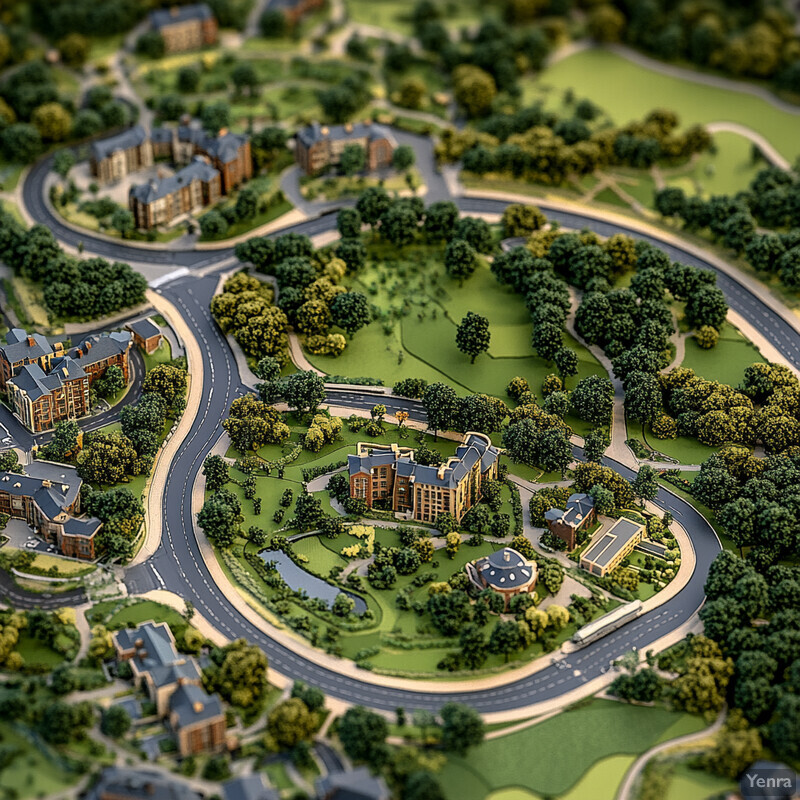
For instance, researchers at NYU developed a deep segmentation model with a “green-augmentation” step to detect urban trees and parks. This AI achieved 89.4% overall accuracy (90.6% reliability) in identifying green infrastructure, versus only ~63% for baseline methods. Such high performance indicates that AI can rapidly classify features like street trees, parks, and roofs from imagery. These automated urban maps enable planners to efficiently inventory green space and buildings, and to monitor growth or redevelopment.
10. Forest Inventory and Biomass Estimation
Aerial imaging and LiDAR combined with AI allow detailed forest inventories. Algorithms can segment individual tree crowns from high-density point clouds and measure tree attributes (height, crown diameter). These metrics feed into models that estimate wood volume and biomass. As a result, forest managers get accurate counts of trees and biomass estimates without laborious field surveys. AI methods also classify species composition in some cases, further refining carbon stock estimates. This technology greatly improves the speed and accuracy of forest inventory and supports carbon accounting.
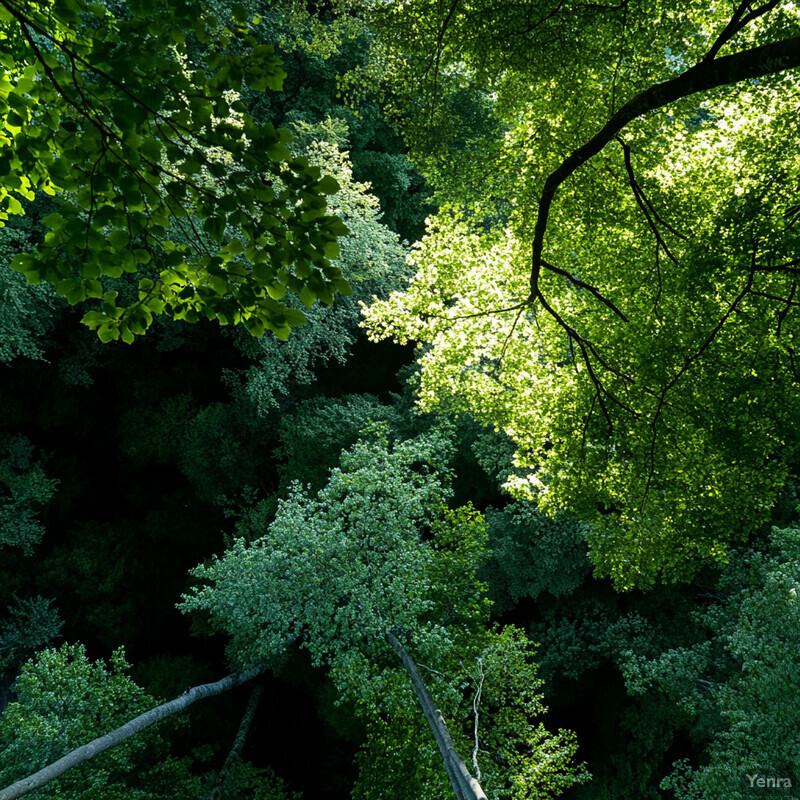
One deep learning system (ForAINet) processed ultra-dense aerial LiDAR to delineate trees; it achieved over 85% F1 score in detecting individual tree crowns and >73% intersection-over-union across classes. In terms of biomass estimation, a study applying random forest to airborne data reported R² exceeding 0.65 for predicting above-ground biomass in various forest types (test data), with RMSE between 24–42 Mg/ha. These results show that AI can reliably extract tree metrics and predict biomass from aerial data, enabling near-real-time forest inventory.
11. Habitat and Biodiversity Assessment
AI supports mapping and monitoring wildlife habitats using aerial imagery. By classifying land cover and habitat types (e.g. wetlands, forests, grasslands), AI models help estimate habitat availability and condition across landscapes. These maps serve as proxies for biodiversity potential and help identify critical areas (e.g. migration corridors, breeding grounds). AI can also aid in species-level monitoring: for instance, models can detect key indicator species or measure vegetation structure important for wildlife. Overall, AI analysis of multi-spectral or LiDAR data provides scalable inputs for biodiversity and habitat assessments.
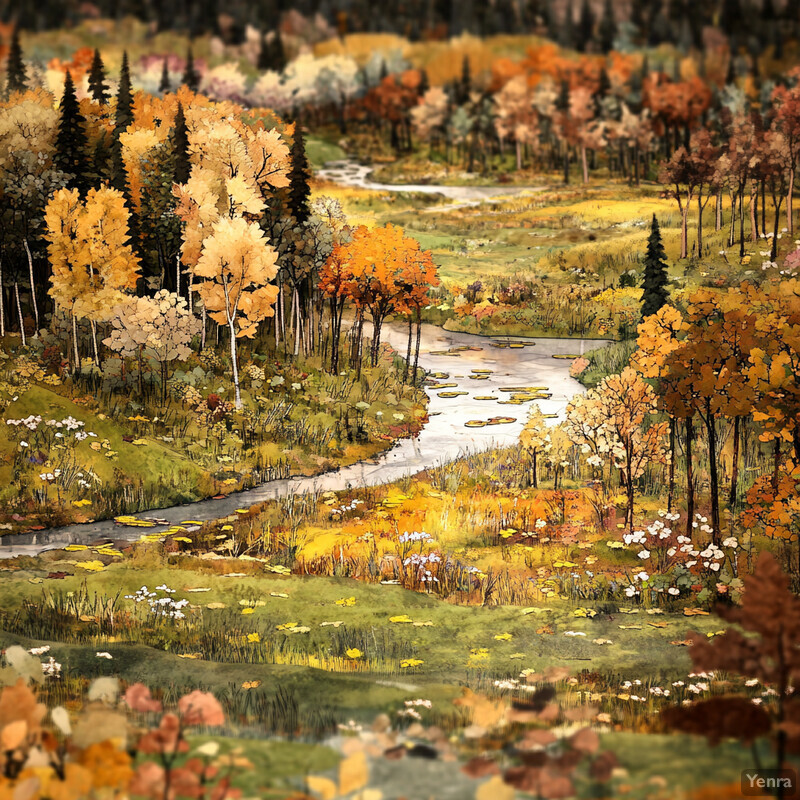
A current project is using AI to remotely evaluate habitat quality for biodiversity net-gain; it assesses 50 condition criteria across five broad UK habitat types (e.g. woodland, grassland) from aerial data. This approach promises systematic habitat assessment at landscape scale. In a related application, deep learning was used to classify individual tree species from aerial imagery: one study’s best model achieved ~71.6% weighted F-score and ~72.7% macro accuracy for multi-species forest imagery isprs-archives.copernicus.org . By distinguishing plant species and habitat features, these AI tools contribute detailed information to biodiversity models and monitoring programs.
12. Precision Ranching and Livestock Tracking
In livestock management, AI processes aerial images or video to count and monitor animals. Models like convolutional neural networks can detect individual cows, sheep or other livestock in pasture images, even at night or in difficult terrain. This enables automated herd counting, health monitoring (detecting stragglers or dead animals), and tracking grazing patterns. Such systems reduce the need for manual mustering and can improve animal welfare by quickly identifying issues. Over large rangelands, AI-driven drones offer a practical way to keep track of livestock movements and numbers.
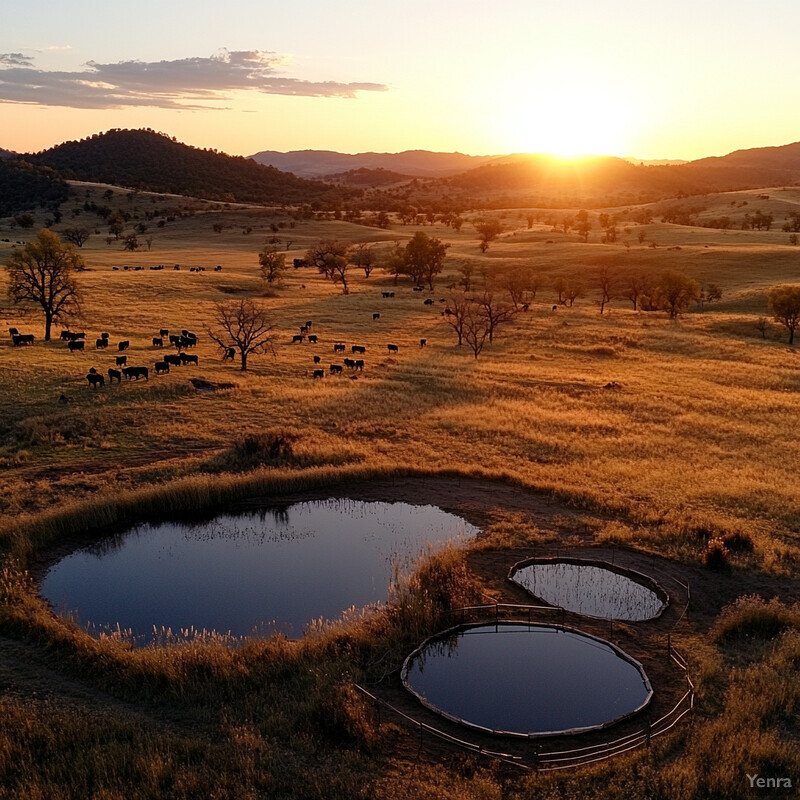
For example, Araújo et al. (2024) developed a specialized YOLOv8 model (with attention modules) for detecting dairy cows in outdoor images. Their model achieved 95.2% precision and a mean average precision (mAP@0.5:0.95) of 82.6% across varied conditions. This high level of accuracy demonstrates that deep learning can reliably identify and count cattle from aerial views. By applying such models in practice, ranchers can automate herd surveys and respond quickly when animals are missing or sick.
13. Legal Compliance and Enforcement
AI-driven aerial analysis helps enforce land use and environmental laws. Agencies can use high-resolution imagery and AI to check compliance (e.g. that farmers plant cover crops, forests are not illegally cleared, or mines reclaim land as required). AI can also detect pollutant discharges (e.g. oil spills) or construction without permits. By automating the monitoring process, regulators can apply resources more efficiently and act on violations faster. In essence, AI imaging acts as a surveillance tool to ensure legal requirements (for forestry, wetlands, mining, etc.) are being followed.
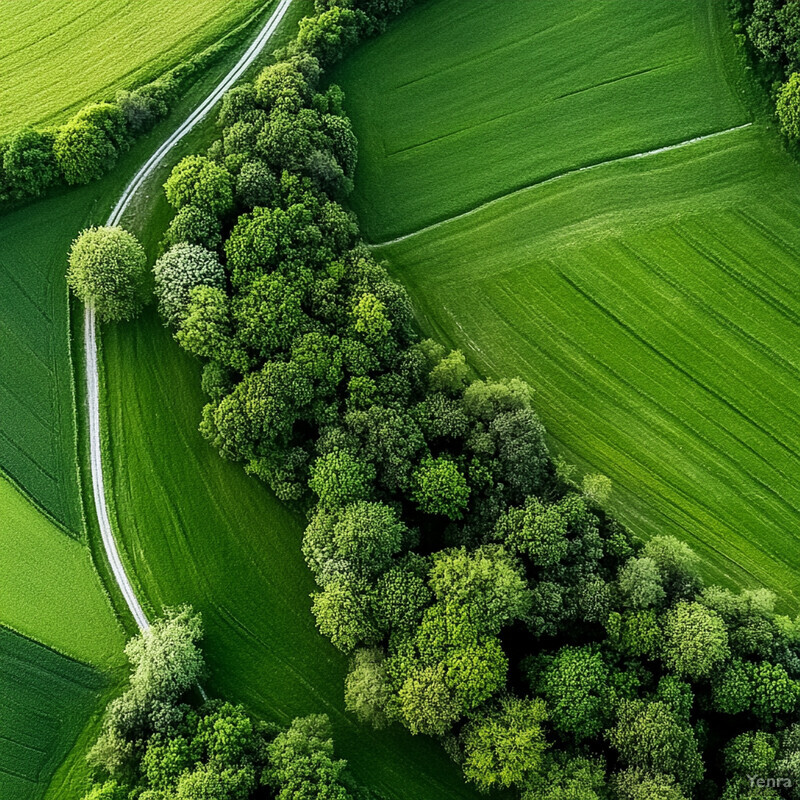
A policy review emphasizes that comprehensive Earth-observation systems (satellites, drones, sensors) are key to enforcing environmental rules. It notes that such networks can “monitor compliance” with laws and enable “more effective enforcement” by providing timely data. For example, the same report recommends using satellites and UAVs for continuous monitoring of methane leaks; this would allow regulators to detect unauthorized emissions rapidly and enforce pollution limits. These analyses indicate that AI-applied imagery is expected to significantly boost regulators’ ability to detect illegal activities and confirm that remediation or restoration commitments are met.
14. Soil Erosion and Sedimentation Modeling
AI models use aerial imagery and terrain data to predict soil erosion and sediment transport. By learning from digital elevation models, land cover, and rainfall, machine learning can estimate how much soil loss will occur under given conditions. These predictions produce erosion risk maps that highlight vulnerable slopes or farmlands. Such tools help conservation planners prioritize where to place terraces, cover crops, or sediment traps. AI thus complements traditional erosion models by quickly processing large datasets and refining predictions with remote observations.
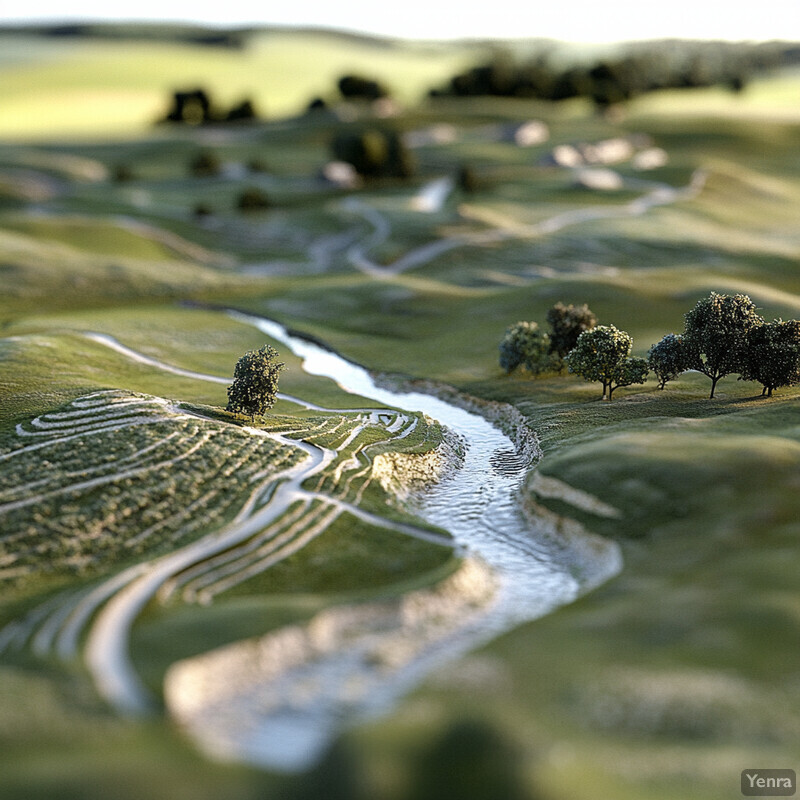
For instance, a study in the Himalayas used a Random Forest model to map the soil erodibility factor (K-factor) based on in situ samples and remote-sensed covariates. The model explained ~91% of variance in training (R²=0.91) and 45% in testing (R²=0.45) for K-factor, generating a 12.5 m-resolution erosion susceptibility map. Key predictors were geology, mean NDVI, and climate. This demonstrates that AI can spatially predict soil erosion potential with moderate accuracy, providing detailed maps to guide erosion control.
15. Cultural Heritage Site Protection
AI analysis of aerial imagery is applied to protect archaeological and cultural heritage sites. Models can detect new disturbances (e.g. illegal digging, constructions) or changes (e.g. erosion damage) at known sites. By regularly comparing imagery, AI can flag areas of concern requiring investigation. Drones also enable detailed 3D documentation of monuments, with AI aiding in recognizing cracks or subsidence. These methods help heritage managers monitor remote sites efficiently and prioritize preservation actions.
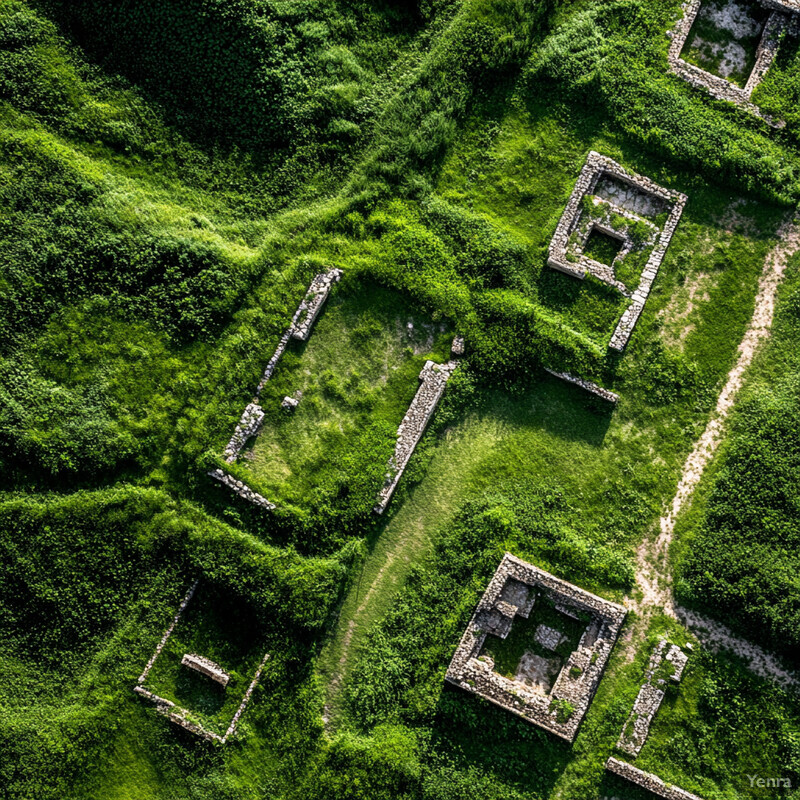
As one example, the EAMENA MLACD tool applied machine learning to sequences of satellite images around archaeological sites; it automatically produced land-cover change maps and identified disturbances. In an initial Libya case study, this system successfully detected potential threats to heritage sites and greatly sped up monitoring compared to manual inspection. While large-scale performance metrics are not yet published, such prototypes demonstrate AI’s ability to flag site damage and illicit activities from the air.
16. Carbon Sequestration Monitoring
AI in aerial imagery is used to map forest structure and vegetation to estimate carbon stocks. By measuring tree height, canopy cover, and species, AI models calculate biomass and carbon sequestration. For example, 3D reconstructions from drones (using photogrammetry or LiDAR) provide forest volumes. High-resolution classification of vegetation types refines carbon estimates (since some species store more carbon). These tools allow tracking of carbon changes over time, supporting climate mitigation (e.g. verifying reforestation projects). In essence, AI improves the accuracy of carbon monitoring by extracting detailed vegetation metrics from imagery.

In a notable example, Meta (in collaboration with WRI) applied AI to high-resolution satellite images to produce a global 1-meter map of tree canopy height, enabling detection of individual trees worldwide. This level of detail can greatly improve biomass estimates. Experts also note that aerial imagery allows tree species classification, enhancing forest type maps derived from coarser data. Combining accurate height measurements with species information leads to more precise carbon stock calculations. These developments suggest AI-powered high-resolution mapping will make carbon accounting more reliable.
17. Mine Reclamation and Environmental Compliance
After mining, AI-analyzed imagery monitors land restoration and compliance with regulations. Models identify bare mine lands versus revegetated areas, measure vegetation regrowth, and detect sediment or contamination plumes. Regulators can compare current imagery to pre-mine baselines to ensure reclamation meets targets (as required by law). This supports enforcing reclamation standards and prioritizing sites for cleanup. In short, remote sensing with AI provides quantitative tracking of how well mined lands are being restored.
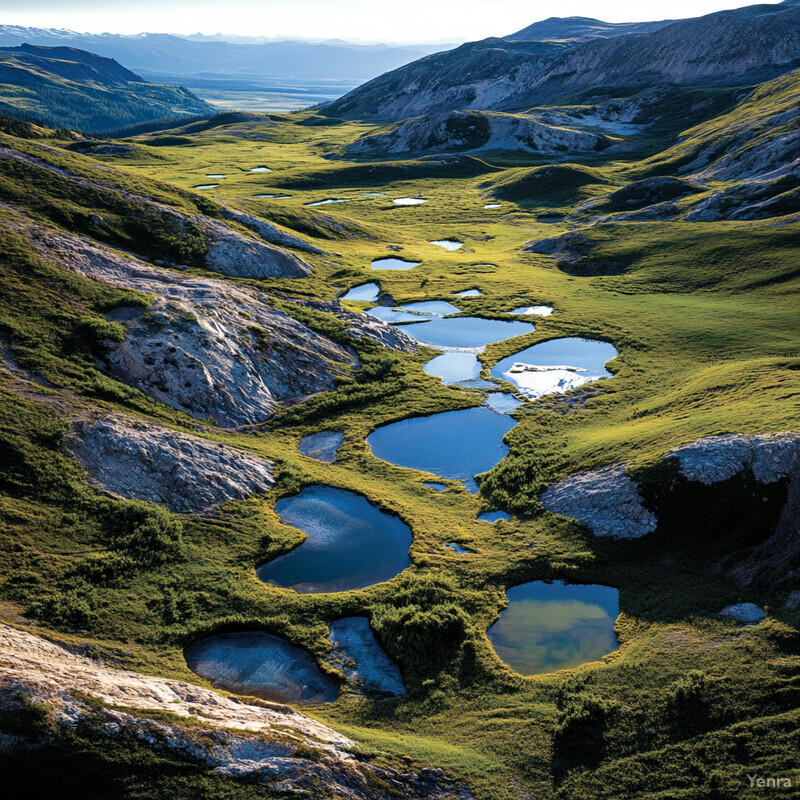
A recent USGS review highlights how remote sensing can support mine land recovery. It notes that imagery and data analysis are vital for setting vegetation recovery targets under laws like the Surface Mining Control and Reclamation Act. Using pre- and post-mining images, AI can quantify whether reclaimed areas have achieved required ground cover or health levelspubs.usgs.gov . For example, decision makers can derive and track numerical vegetation indices or sediment cover metrics. This demonstrates that AI-driven analysis of aerial data can objectively verify environmental compliance in mine reclamation.
18. 3D Terrain Modeling and Landscape Analysis
AI and photogrammetry are used to generate 3D models of the terrain and landscape from aerial images. By matching features across overlapping images, AI pipelines create dense point clouds and mesh surfaces. The resulting 3D terrain models are used for flood modeling, construction planning, and simulation. AI improvements have made real-time or incremental mapping possible (e.g. on-the-fly processing on UAVs). Such models capture fine elevation details (e.g. building geometry, road topography) and natural features, providing a comprehensive 3D view of the landscape for analysis.
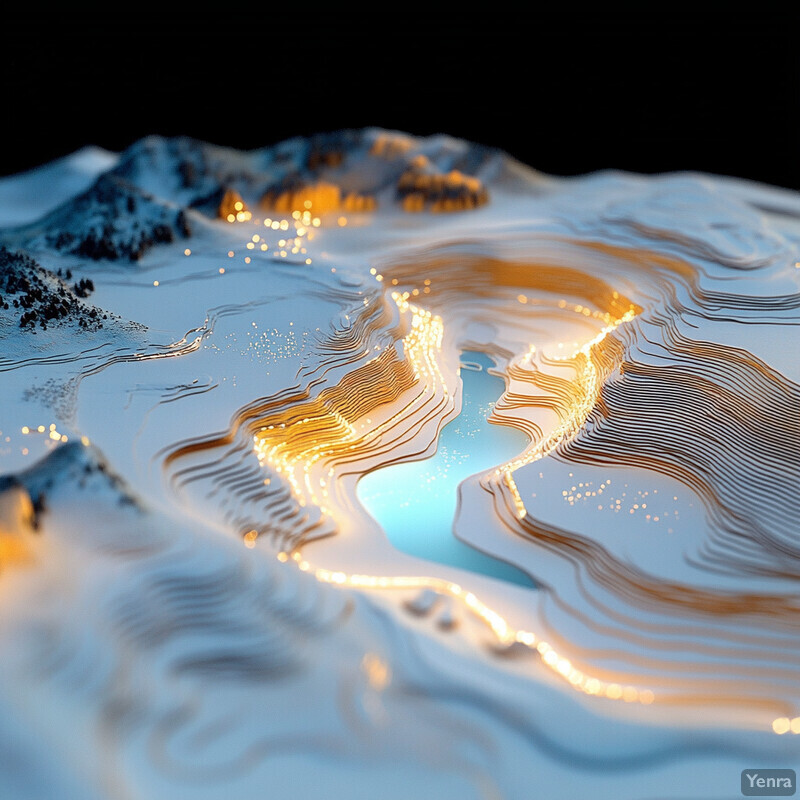
In one system, researchers developed a near-real-time 3D reconstruction pipeline for UAV imagery. Their method achieved very high precision in reconstructing building shapes and terrain features. Qualitative comparisons showed their output had finer geometric detail and texture than standard 3D mapping (e.g. Google Maps). Similarly, the Open Forest Observatory project applied Neural Radiance Fields (NeRF) to aerial forest data; this approach produced much higher-quality 3D reconstructions of tree crowns and understorey than conventional photogrammetry. These advancements indicate that AI-enhanced workflows can rapidly produce accurate 3D models of landscapes from aerial data.
19. Multi-Temporal and Seasonal Pattern Analysis
AI leverages sequences of aerial images taken at different times to identify patterns that repeat seasonally or over years. By analyzing multitemporal data, models can detect crop rotation cycles, vegetation phenology (leaf-on/leaf-off), flood recurrence, or gradual land-use trends. This helps distinguish permanent change (like urban expansion) from seasonal variation. For example, AI can classify fields into crop types by learning their characteristic greening and harvesting patterns. It can also track changes in water bodies across wet and dry seasons. Such temporal analysis is critical for understanding ecosystem dynamics and for making seasonal predictions.
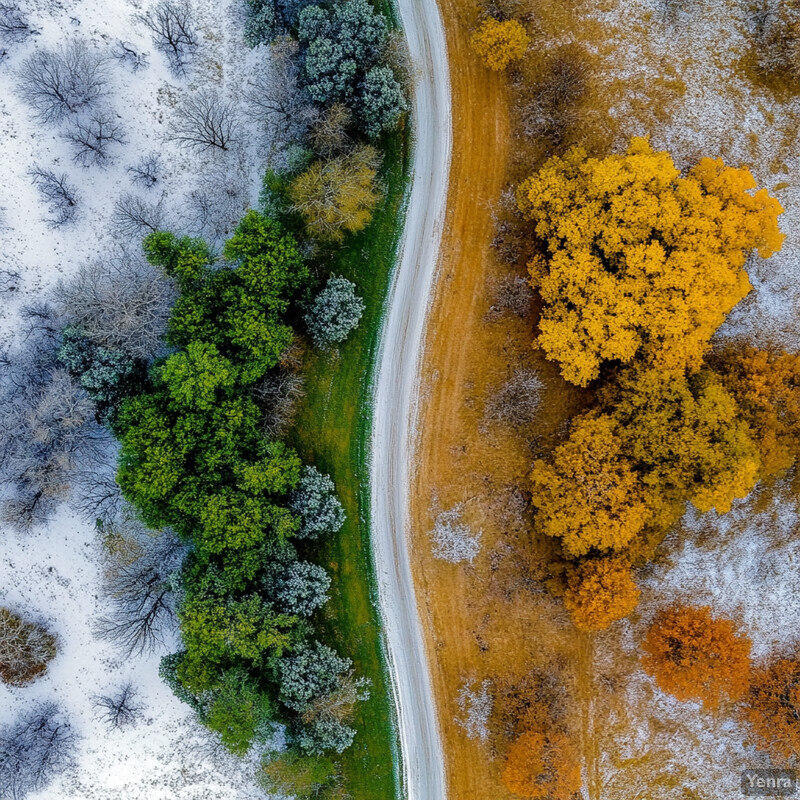
One study used multi-date satellite imagery and deep learning (U-Net+ResNet) to classify active coal mining areas versus reclaimed land. The model was able to distinguish mining vs. non-mining terrain effectively across seasonal imagery. While exact accuracy figures were not reported, the authors noted this approach is much more scalable than manual surveys. (The method’s success implies the model learned both spatial and seasonal signals of mining land use.) In general, combining imagery from multiple seasons improves classification: though not quantified here, past research shows that including seasonal indices significantly raises land-cover classification accuracy compared to single-date data.